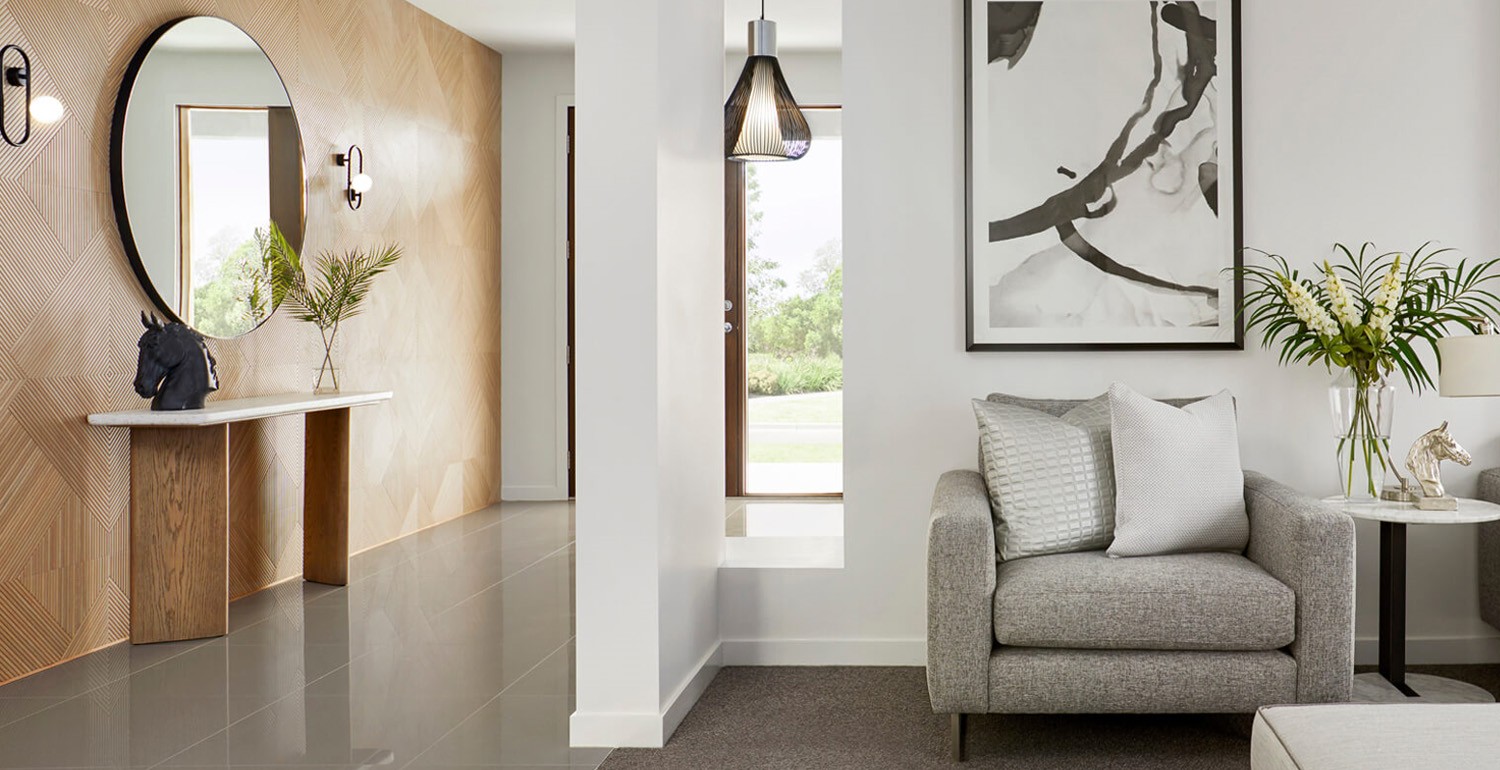Mirrors are particularly valuable in small spaces. In addition to having decorative and functional uses, they can enhance lighting, capture unique views, enlarge spaces, and add balance to a room. To take advantage of these benefits, it is important to understand how to properly place mirrors and how they can affect your space.
Positioning for optimal appeal
A decorative mirror is most effective when it is proportionate to the wall on which it is placed. This means that, when positioning artwork, the wall should act as a framing device. Visually, the mirror should be centered with enough wall space around it so that the mirror does not appear too small or too large. For example, if the mirror is 3 feet by 5 feet, the mirror’s wall space should be approximately 4 feet by 6 feet or a similar proportion.
When determining how high to hang larger mirrors, take into account the average scale of a person’s body
An easy method is to align the bottom of the mirror with your waist and the top so that it extends slightly beyond your head. This means that the bottom generally starts about 3 feet from the floor and spans up to 6 feet high, or within a comfortable range relative to your height. One exception is for dressing mirrors, which usually span from the floor to approximately ceiling height; however, these are best placed on the door of a closet or somewhere more discreet since they are used mostly for functional purposes rather than for enhancing decor. When determining the height for smaller mirrors, place them so that they are equidistant from the sides of the wall and the middle is a bit above eye level.

Adding consistency and embellishment
One effective strategy is to frame your mirror. As with artwork, the frame should relate to the rest of the furnishings in your home. If your furniture has chrome legs or arms, you should use chrome frames. Similarly, if there are hints of black in the room, you should use black frames.
By keeping consistent with the theme of the apartment, you can subtly connect the pieces as opposed to introducing a new color or finish that might cause interference.
Correcting a room’s imbalance
If a space is noticeably long and narrow — like a hallway — balance the room by positioning a mirror vertically on the wall (so that the mirror’s short side is pointing up toward the ceiling). It helps to think of the mirror as running against the grain, opposite the direction of the wall size. Most mirrors are oval or rectangular (as opposed to square), so there is usually a side that is shorter. The vertical position creates the visual effect of squaring off the space by downplaying the room’s length and accentuating its height, thus making it feel more like a room rather than a tunnel.
As a comparison in the same setting, if you were to place a mirror horizontally on the wall (so that the mirror’s long side spans across the wall from left to right), the mirror would emphasize the length of the room, thereby resulting in a space that would feel longer and more cramped. For apartments that have disproportionately high ceilings, placing a mirror horizontally will tone down the ceiling height and emphasize the length of the room, which will make for a more comfortable and spacious room.
A creative way to use square or circular mirrors is to place them in a series to achieve a horizontal or vertical effect, similar to that of grouping pictures or artwork. In other words, placing four identical square mirrors next to each other on a wall creates a horizontal effect. If you were to take that same series and place it along the wall so that each mirror stood on top of the previous, this arrangement would have a vertical effect.
Capturing light
Using mirrors to reflect and attract natural light from an outside source, or hanging mirrors in the right places, creates the perception of light and space. A simple experiment is to place a mirror across from (or at an angle to) a window so that the mirror reflects the landscape beyond. If done correctly, this should have the dual effect of capturing sunlight as well as the view from outside. If you happen to have a particularly nice view, the effect can be astonishing. This concept can also be used to amplify the light emitted from a sconce or light fixture within your apartment.
Related article: Curtains, Drapes and Window Treatments
Hanging mirrors
The approach for hanging mirrors is very much the same as for hanging artwork, except that mirrors need stronger picture hooks since they tend to be heavier. In addition, because of their weight and fragility, mirrors should never be hung by their frames but rather by the wire that usually comes with the mirror and spans the sides of the mirror frame.


